June 25, 1981: Leonard vs Kalule
Here’s the thing some people don’t get about Sugar Ray Leonard: the man was more athlete than boxer, and, despite his “sweet” nickname, he was more bad-ass than candy-ass. Even a good number of otherwise knowledgeable fight fans have the wrong impression. They point to the Hagler fight in ’87, and the third bout with Duran in ’89 and say, “See? He was a runner! Always shuckin’ and jivin’! Clinching and grabbing! Dancin’ and prancin’! And doing some cherry pickin’ too!”
And while such charges are not completely without merit, don’t let them obscure an important fact: in his prime, Sugar Ray Leonard was flat-out deadly. A ring technician or boxing wizard? Not really. As boxing historian Hank Kaplan once remarked, Ray was, more than anything else, “a speed demon.” In other words, it was his athletic gifts first and foremost that made him an extraordinary pugilist. But in addition to his amazing speed and natural power, Leonard was ruthless, with killer instinct to spare; when he wanted to be, he was a bona fide destroyer in the ring. And that was more often than you remember.
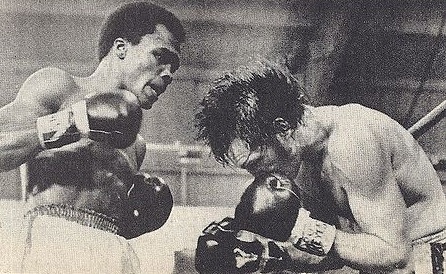
Don’t believe it? Well, consider the fact that, having turned pro in 1977, Leonard went on an amazing run soon after, charging through the welterweight ranks like a Bengal tiger on speed, ripping up everything in his path and notching decisive wins over such tough customers as Armando Muniz, Johnny Gant, Randy Shields, Fernand Marcotte, Adolfo Viruet and Pete Ranzany. All, it should be noted, former world title challengers or NABF title holders.
And then, to cap off what has to be regarded as one of the most rapid yet fully legitimate ascents in boxing history, Leonard was matched with Andy “The Hawk” Price as the co-main event of a huge card at Caesars Palace in Las Vegas that was headlined by heavyweight champion Larry Holmes and broadcast on national television. All agreed, Price was a dangerous opponent for the undefeated star-in-the-making, “The Hawk” having significant pro experience and boasting wins over Carlos Palomino and Pipino Cuevas, both world champions.
But Ray didn’t care; he marched out at the opening bell, backed Price to the ropes, and unleashed an amazing, rapid-fire barrage of crisp power shots to render Price helpless and put him down for the count. What was supposed to be an excellent match-up and a tough challenge for Sugar Ray was over in less than three minutes, the bout decided by Leonard’s speed, power and often overlooked killer instinct.
The point here is that those who see Ray as a safety-first ballerina who only rumbled when he had no other alternative are overlooking an essential aspect of what Leonard brought to the ring, not to mention a major reason why he is generally regarded as both a pound-for-pound great and one of the best welterweights in all of boxing history. The simple fact is the man could flat-out fight, could more than hold his own against legit knockout artists and fearsome warriors such as Duran, Hearns and Hagler. And also, one Ayub Kalule.
Because the thing to recall when taking a look at Leonard vs Kalule is that chances are this could have been a fairly routine outing for Sugar Ray if he had wanted it to be. After all, even though this was a legit title match at a higher weight, and a chance for Leonard to win a second world title, it was essentially a tune-up fight, meant to set the table for a huge money showdown with WBA welterweight champion Thomas Hearns. Ray had the speed, skill and ring smarts to box Kalule — much the way he would box Hagler in ’87, or Duran in ’89 — and make it a relatively easy fight, but for whatever reason, Ray was looking to rumble that night. And a rumble is what Ray got.
Keep in mind: Kalule was no joke. Strong, tough, experienced and a southpaw to boot, the WBA junior middleweight champion was unbeaten in 36 outings and deserved to be regarded as the best boxer to come out of Africa since Dick Tiger, not to mention one of the most formidable champions in the short history of the 154 pound division. Before the fight Leonard had dismissed him as an “advanced amateur,” but he had to have known such a judgment was selling Kalule short.
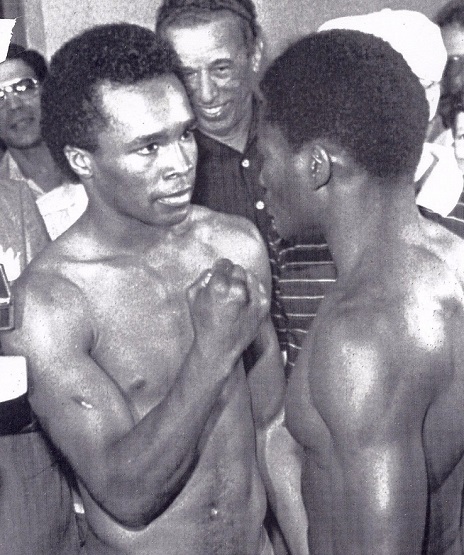
If he did not, an aggressive, flat-footed Sugar Ray found out in round one as the defending champion answered Leonard’s tactics with a heavy jab and strong counters to the body. Leonard’s speed gave the challenger a decided edge, one which largely defined the contest, but Kalule showed he had come to fight, absorbing Ray’s best shots and then firing back.
In round two the champion’s courage was evident as he continued to show patience in the face of Leonard’s blitzkrieg. While Leonard was head-hunting with power shots from either fist, the African kept his hands up and never stopped throwing a somewhat slow but heavy right jab along with powerful blows to the midsection. A right hand staggered Kalule at the end of the second but he seemed unhurt and in round three he persisted with his body attack, landing with both fists to Leonard’s ribs.
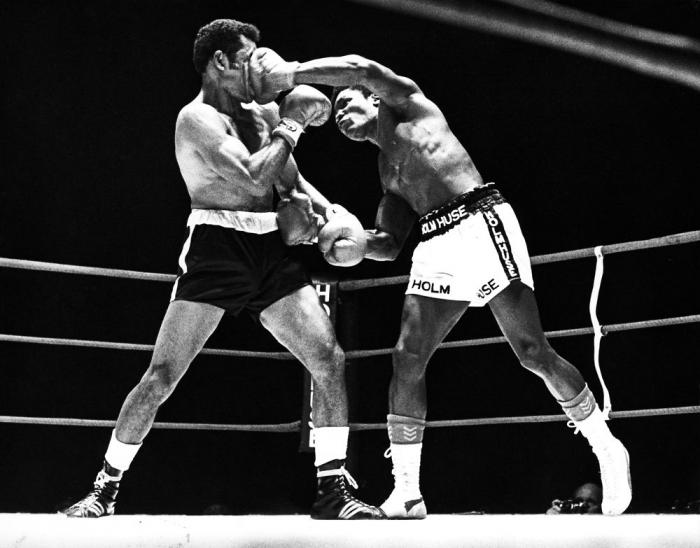
If the first three rounds were competitive and entertaining, round four was a slugfest. Leonard doubled-down on his aggression, working to force Kalule to give ground, but the champion hung tough with the right jab to the head and the power left to the body. Near the end of the round Sugar Ray opened up with a vicious attack but instead of wilting under the pressure, Kalule, to the delight of the crowd, responded in kind. The result was a ferocious exchange, both fighters landing heavy blows. At the bell Ray tapped Kalule as a sign of respect for an opponent who was clearly more than an “advanced amateur.”
Round five was more of the same as Leonard continued to slug it out in most rudimentary fashion, with little head movement, his hands often low, seemingly inviting Kalule to make him pay for his overconfidence. And indeed both men landed big right hands in the fifth as the fans in the Houston Astrodome applauded the rousing action. In round six Kalule continued to throw the one-two, quick right jabs followed by lefts to the body, and at the bell Leonard, who had won every round thus far, but at the same time was clearly getting a serious challenge, gave his adversary a long look as if to say, “Why are you still here?”
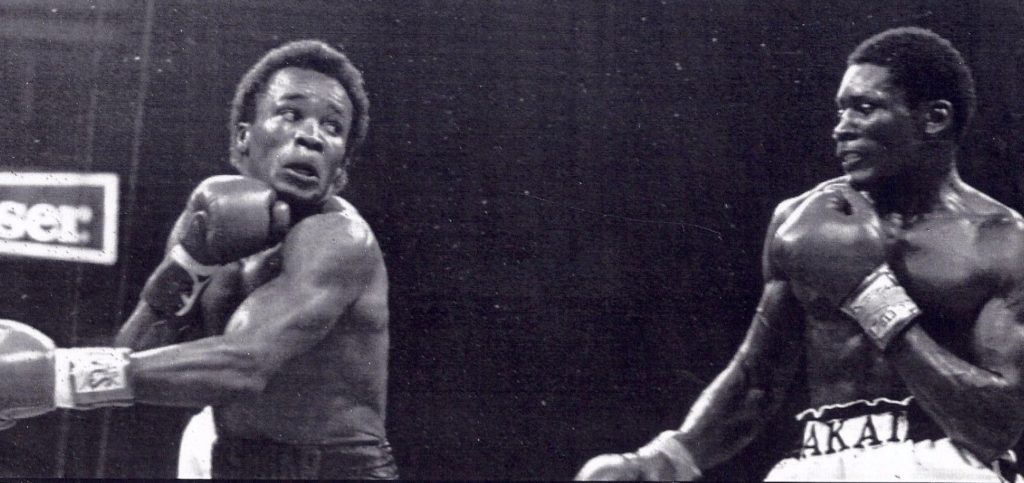
As if to answer, the champion had his best round of the match in the seventh, backing Ray up and mixing jabs, hooks and uppercuts with aplomb, catching Leonard cleanly with sharp blows. A surprised looking Ray found himself backed to the ropes by the force of Kalule’s aggression and taking shots, and when he tried to counter with one of his trademark flurries, the champion flurried back with blows that were in fact sharper and harder. It was definitely Kalule’s round, albeit his first, and for a moment it appeared he might, to everyone’s surprise, be getting the upper hand.
But in fact, it was his “swan song.” While Kalule’s power and ability had surprised both Sugar Ray and many at ringside, his effort in round seven took a discernible toll on his stamina. The pace slowed in the eighth, and then it was Leonard who found his second wind and opened up with a barrage near its end to reassert command. And indeed, it was Ray who picked up the pace in round nine with big left hooks and uppercuts.
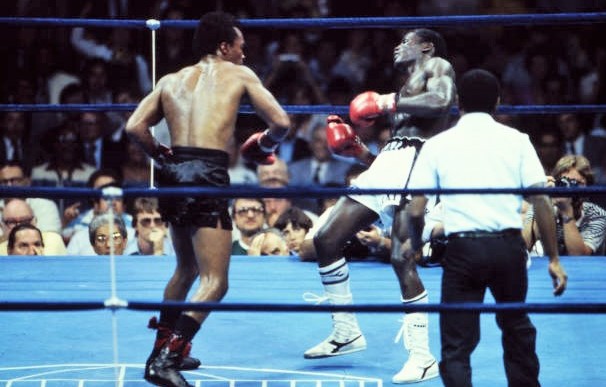
Sensing Kalule was vulnerable, Leonard showed again his excellent hand speed and accuracy, not to mention his killer instinct, as he pursued his quarry with vicious intent. But just when it seemed he was about to steamroll Ayub, the proud champion snapped Ray’s head back with a sharp right hand. Once again, the two warriors went toe-to-toe; no clinching or wrestling, just non-stop exchanging, as they took turns landing their heaviest shots, Leonard connecting with right leads and left hooks and the southpaw champion firing back with right jabs and left uppercuts.
Then, with seconds left in an action-packed and grueling round, Ray pawed with his left to set up a thunderous right that landed flush and buckled Ayub’s legs. The African tried to clinch but Leonard wouldn’t let him, striking with a right, a left and then another right, and sending the iron-tough Kalule to the canvas for the first time in his career. The champion rose at the count of six, but when asked if he wished to continue his response didn’t satisfy the referee and the fight was stopped. Leonard somersaulted in celebration as Kalule held out his hands to embrace his conqueror.
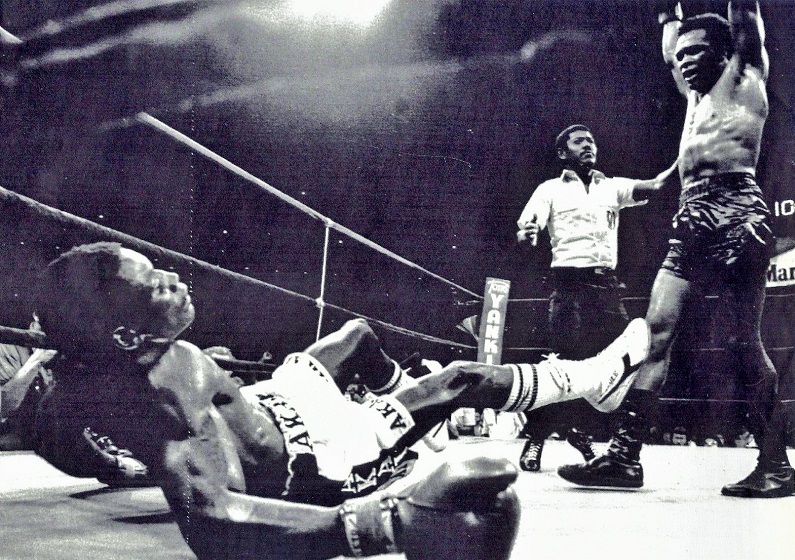
Immediately afterwards Leonard was interviewed in the ring and he didn’t hesitate to pay respect to his formidable opponent, declaring that Kalule had “proved the boxing critics wrong. He was a very tough and durable champion,” and going on to say that “I’d like to eat my words when I called him an advanced [amateur]. The guy is truly a worthy champion.”
“But you know who’s next,” said Ray as he locked eyes with the camera, “Tommy Hearns.”
And indeed, Leonard would need all of his killer instinct and warrior spirit to win that unforgettable clash. But he did. Because the fact remains, love him or hate him, Sugar Ray Leonard was a warrior. As he showed on that night in Houston when he went toe-to-toe with Ayub Kalule and powered his way to a second world championship. — Neil Crane


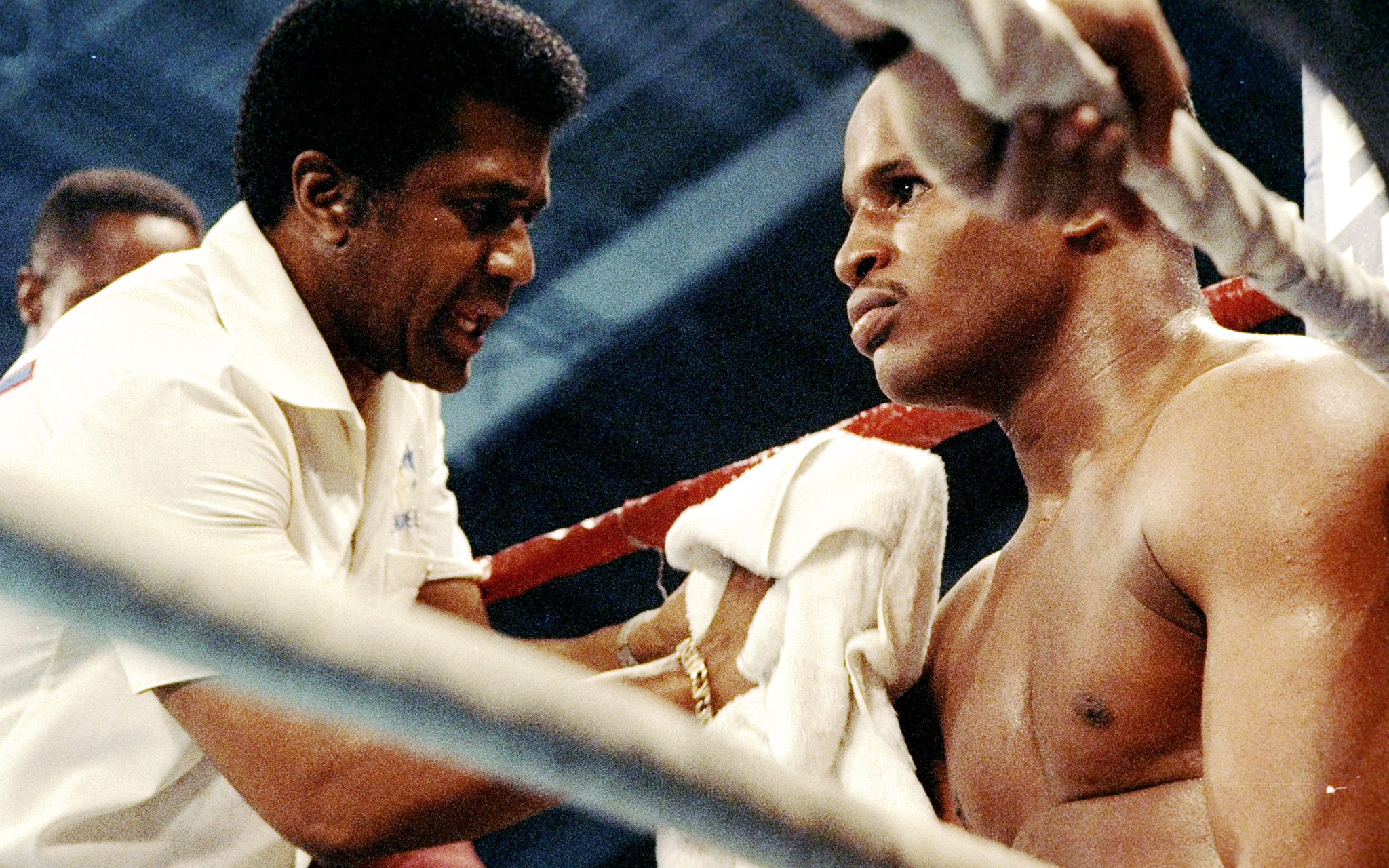
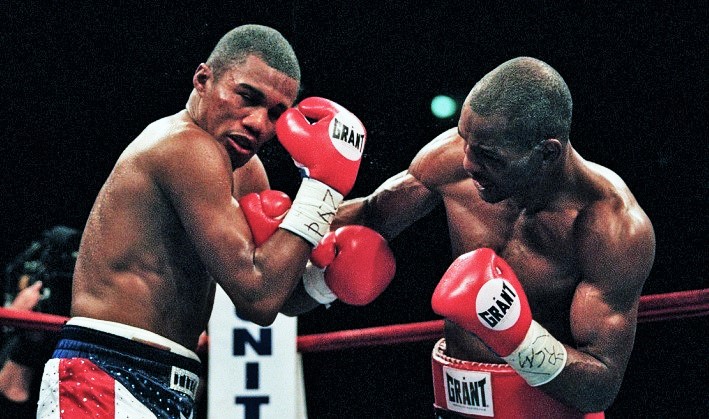
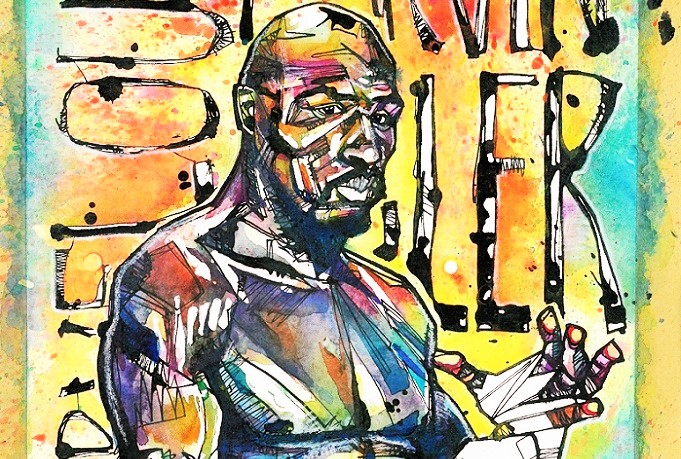
Great article! Sugar Ray Leonard was truly a great fighter as I got to witness his prime when I was a teenager. Sugar Ray was indeed a special fighter.
Yes there’s plenty of reasons to dislike Sugar Ray Leonard, but there is no denying his greatness as a boxer. As a man, not for me to say.
Very good fight. I had done my research on Kalule years before when he won the title in Japan and was always in articles in boxing magazines I bought.
I was there that night. It was electric. The first championship fight I ever attended.